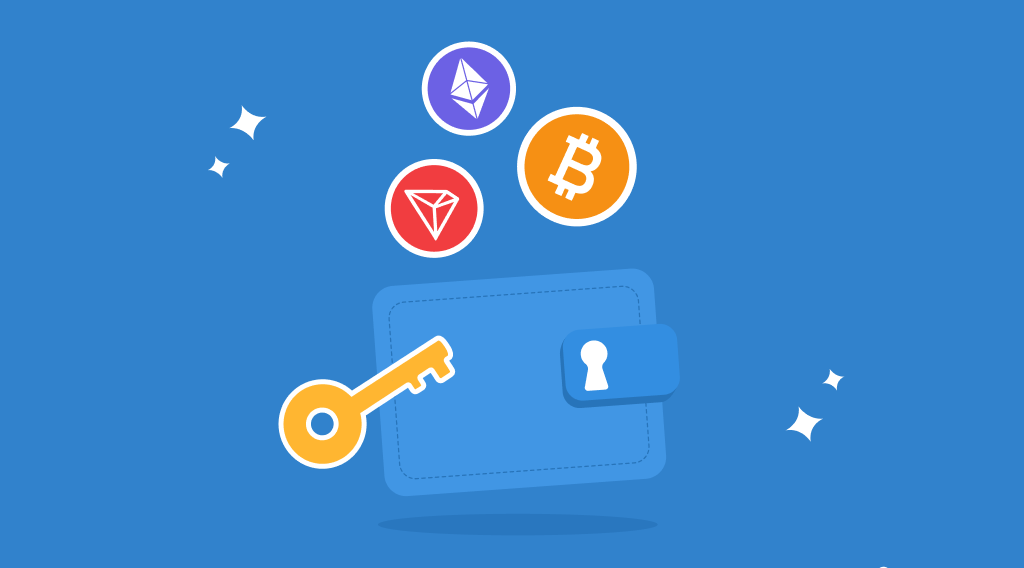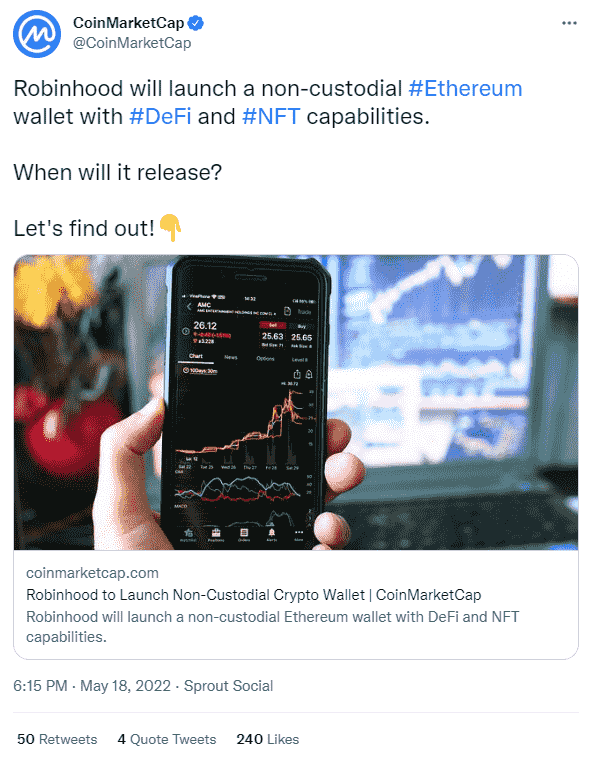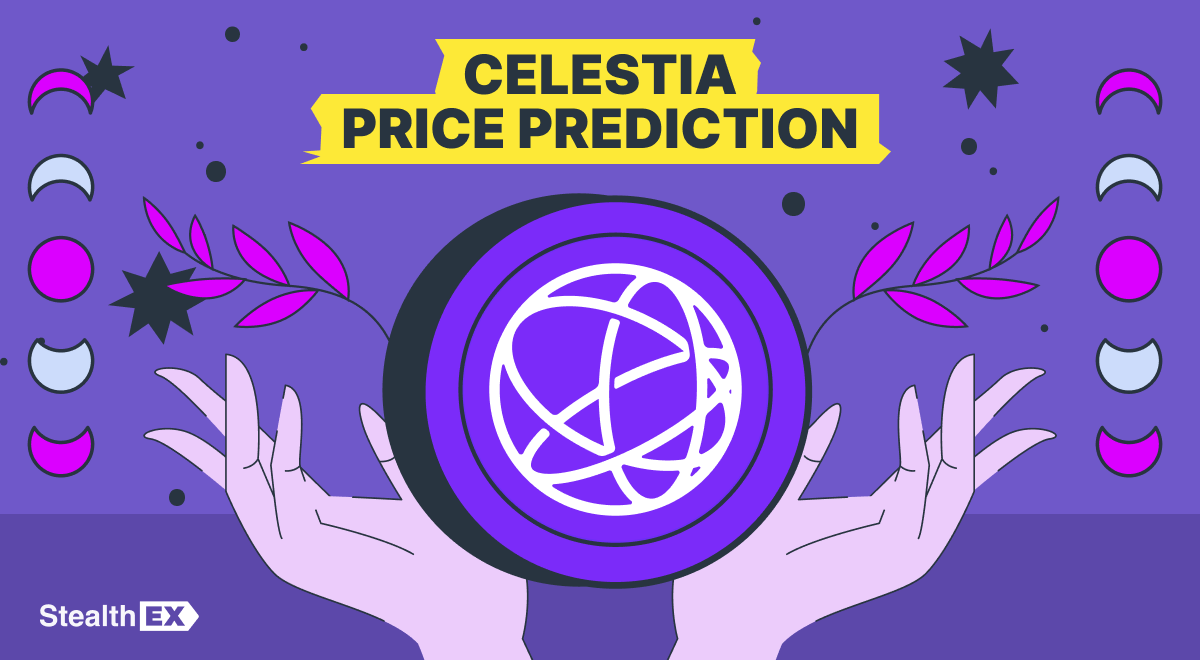What Are Custodial and Non-Custodial Services and Wallets?

There’re many services, apps and software that allow us to work with cryptocurrencies. We can buy it via exchanges, store them on different platforms or in special wallets. Sometimes, platforms retain custody of your digital assets, just like in a bank. These are called ‘custodial’ wallets or services. Centralized cryptocurrency exchanges are oftentimes custodians, which means that they keep your crypto for you, and the private keys are not held by you. This is where one of the most popular sayings in the industry comes into play: ‘Not your keys – not your Bitcoin.’ Of course, this is just as true for any other type of crypto. Read more about custodial and non-custodial services in the new StealthEX article.

Article contents
Pros and Cons of Custodial Wallets
Custodial wallets have their advantages:
- Simplicity vs responsibility. They are easy to manage with little responsibility and are usually more convenient.
- Access. If you lose your password you can usually reset it.
- A large number of features. Custodial wallets offer a range of features including providing an exchange to buy and sell many different cryptocurrencies.
- User-friendly. The services have usually developed a good user experience from their apps to customer service.
These types of wallets also have a number of disadvantages:
- Control. You do not have total control of your cryptocurrency and your custodian has freedom to freeze your funds.
- Verification. You can’t gain access to your funds or any of the related services without proving your identity through KYC and AML rules.
- Safety. The entire wallet service has some vulnerability to data breaches and hacks. You can lose your funds before you know it, so your digital assets are less safer in this environment.
- Internet connection. You usually need to be connected to the internet to access your wallet.
Some of the popular custodial wallet services include Coinbase, Paxful, Binance, Localbitcoins and many more.
What Is a Non-Custodial Wallet, Exchange, Service?
As the crypto industry developed, many have moved on to separate ‘non-custodial’ platforms, apps or software. These are platforms or wallets that enable users to take full ownership of their assets. The name (non-custodial) comes from the fact that the wallet itself doesn’t have custody of your crypto but rather serves as an interface that enables you to easily conveniently access it while also allowing third-party integrations.
Among non-custodial services, you will find crypto wallets, decentralized exchanges and various decentralized platforms.
Pros of Non-Custodial Wallets
- Ownership. When you use a self-custodial wallet, first of all, you don’t need to ask for permission to use the service. There’s no account approval process, meaning anyone in the world can download the app and start using it immediately.
- Access. Only you have access to your funds. This makes it nearly impossible for the service provider, a government, or anyone else to prevent you from using your digital assets the way you want to use them.
- Security. The exchanges are oftentimes attacked by hackers, and there have been several instances where users of the largest and most well-known platforms have been robbed off their fortune. This is something that will never happen if you are in charge of your own private keys. You need to be able to shield your purchases and if you are using a non-custodial service or platform that doesn’t store your private keys, no one will know how many cryptocurrencies or digital assets you have in your account.
- Privacy. Privacy is important. For instance, there is no need for KYC checks so you can trade anonymously. All you need is a wallet to get started.
- Price. Non-custodial platforms provide much greater control throughout the transaction process. For instance, trading NFTs directly from your wallet without an intermediary provides cheaper fees.
- Availability. A custodial wallet provider can impose a maximum withdrawal limit or unilaterally set fees for using their services. You can temporarily lose access to your crypto if the platform has technical issues. You won’t face these issues with a hardware wallet, however, you may if you are using a non-custodial software program as your wallet.
Cons of Non-Custodial Wallets
- Interface. Non-custodial options can be less user-friendly and convenient than custodial ones, especially if you’re a beginner in crypto. Fortunately, service providers are making dApps a lot easier to use.
- Liquidity. Non-custodial exchanges tend to have lower liquidity and volume than custodial ones.
- Support. Customer support service at major exchange platforms can be more efficient than that of lesser known or popular non-custodial crypto wallets. However, it varies from service to service.
Non-Custodial Wallets: Examples
As mentioned before, a non-custodial crypto wallet is a wallet where only the holder possesses and controls the private keys. There’re many digital wallets that allow you to store your funds. Here are the most popular ones (these can be both digital and hardware):
- Exodus
- Atomic Wallet
- Metamask
- Coinomi
- Tresor
- Ledger
And more are to come. For instance, Robinhood platform announced that they will be launching their own non-custodial wallet.

Non-Custodial Lending Platforms
One of the most popular types of non-custodial services are lending/borrowing crypto platforms. Decentralized finance (DeFi) loans are non-custodial. Rather than depending on a central organization to enforce the terms of the loan, they depend on smart contracts. If a trader takes out a DeFi crypto loan, the trader retains control of their assets’ keys — unless they default on the loan.
DeFi platforms cannot directly lend fiat currency; traders receive stablecoins that can then be exchanged for cash. DeFi loans tend to have a higher interest rate than custodial loans.
One of these platforms is MakerDAO. It is an organization developing technology for borrowing, savings, and a stable cryptocurrency on the Ethereum blockchain. It has created a protocol allowing anyone with ETH and a MetaMask wallet to lend themselves money in the form of a stablecoin called DAI. By locking up some ETH in MakerDAO’s smart contracts, users can create a certain amount of DAI – the more Ethereum locked up, the more DAI can be created. When users are ready to unlock their ETH, which serves as collateral for their DAI loan, they simply pay back the loan along with any fees.
Another well-known platform is Compound. Compound runs on Ethereum and aims to incentivize a distributed network of computers to operate a traditional money market. The platform allows users to deposit cryptocurrency into lending pools for access by borrowers. Lenders then earn interest on the assets they deposit. Once a deposit is made, Compound awards a new cryptocurrency called a cToken (which represents the deposit) to the lender. Examples of cTokens include cETH, cBAT and cDAI.
There’s also digital asset management services like yearn.finance. Yearn.Finance is a group of protocols running on the Ethereum blockchain that allow users to optimize their earnings on crypto assets through lending and trading services. One of a number of emerging decentralized finance (DeFi) projects, yearn.finance provides its services using only code, removing the need for a financial intermediary like a bank or custodian. To do this, it has built a system of automated incentives around its YFI cryptocurrency.
Best Non-Custodial Crypto Exchanges
The modern crypto world offers a wide range of crypto exchanges and platforms. If you’ve used StealthEX or another limitless exchange, you might already be familiar with the way these non-custodial services work. A non-custodial exchange platform doesn’t require you to make an account or sign up. You also usually deal with trades directly between each party’s wallets. In this article, we have already provided a short overview of the main flaws a custodial service has, so it will serve as a great addition to this piece.
Non-Custodial Stable Coins
The article about non-custodial services wouldn’t be complete without mentioning stablecoins. Stablecoins are essential in the crypto space. They have the main advantage of protecting traders and investors against the massive market swings. One of the worst issues of crypto is high volatility, and stablecoins can help combat it.
Stablecoins can be centralized and decentralized. Centralized stablecoins are usually fiat collateralized off-chain. These are connected with a third-party custodian such as a bank. Decentralized stablecoins are fully transparent, and they are non-custodial. This means that no one can control decentralized stablecoins. Also, more than that, all collateral backing is visible to all as funds are on a publicly verified blockchain. It’s important to understand that this allows stablecoins to be trustless and secure.
Top 3 Non-Custodial Stablecoins
DAI token
DAI claims to be the world’s first unbiased currency. Crypto DAI allows any individual or business to realize the advantages of digital money. As we mentioned earlier, it’s generated, backed, and kept stable via Ethereum-based currency deposited into MakerDAO’s vaults. The deposited funds work as collateral when users want to withdraw their DAI currency. MakerDAO can keep its stablecoin pegged to the US dollar at a 1-to-1 ratio. Over 400 apps and services have integrated Dai, including wallets, DeFi platforms, games and more.
Ampleforth
Ampleforth is a software running on Ethereum that attempts to incentivize a network of users to maintain a crypto asset with a value equal to the U.S. dollar. AMPL differs from other stablecoins in its method of maintaining price stability. Instead of relying on deposits or issuing and redeeming debt, the software programmatically adjusts the supply of its AMPL cryptocurrency every 24 hours in a process called ‘rebasing.’ If demand for AMPL tokens is high, and each AMPL token exceeds 1 US dollar, the supply will increase. If demand is low, supply will decrease.
DeFi Dollar (DUSD)
This is built as a stablecoin, and it uses the primitives of DeFi in order to remain close to the dollar. The coin offers investors an opportunity to index varying stablecoins in its single token. More than that, it protects users from underlying risks. It’s collateralized by the Curve Finance liquidity provider (LP) tokens, and it is also using Chainlink oracles with the main aim of stabilizing itself. More than that, to offer people maximum safety, it also provides a staking mechanism, adding more protection.
Top 3 Custodial Stablecoins
Tether (USDT)
Tether is one of the most popular stablecoins out there. It was launched back in 2014 as RealCoin. Its purpose was to always be worth the US dollar. This supply of the coin is limited by claimed dollar reserves. It is also the largest stablecoin. This is the reason for which there is always a massive amount of pressure on Tether to compile regular reports about its reserve. Tether has to prove that its value will remain the same as one USD.
USD Coin (USDC)
USDC is a digital currency that is fully backed by the US dollar. USDC is a tokenized US dollar, and the value of one USDC coin is pegged 1:1 to the value of the US dollar. As Investopedia notes, the value of USDC is designed to remain stable, and this makes USDC a stablecoin. It’s also worth noting that USDC is managed by Centre. This is a consortium that is co-founded by two important entities: the important crypto exchange Coinbase and Circle, a financial technology company.
Binance USD (BUSD)
Binance USD is a stablecoin running on Ethereum. For stablecoins like BUSD, the company behind the protocol is responsible for holding reserves that fully back each token. The companies behind BUSD, Binance and Paxos, claim that each BUSD token is backed by and corresponds to one dollar held in traditional bank accounts. Note: Coinbase only supports BUSD on the Ethereum blockchain (ERC-20).
Conclusion
Depending on what you are looking for, both custodial and non-custodial options have their advantages. If you are a crypto enthusiasts, you can try getting a non-custodial wallet or a hardware wallet. For less experienced users, it might make more sense to use a custodial exchange and wallet. In any case, the decision is yours to make.
If you are looking for a place to start your journey crypto universe and buy or exchange crypto, StealthEX is here to help you. It’s a super-friendly, non-custodial and limitless cryptocurrency exchange platform that lets its users from anywhere in the world do instant crypto swaps. At the moment, our crypto collection includes over 450 popular and rare cryptocurrencies, and the list grows with every month.
And all you need to do is select the asset you want to buy, select the amount of the currency you want to buy with and specify your wallet address. No need to register and no extra charges – everything is transparent. As simple as that.
Follow us on Medium, Twitter, Telegram, YouTube, and Reddit to get StealthEX.io updates and the latest news about the crypto world. For all requests message us via [email protected]
The views and opinions expressed here are solely those of the author. Every investment and trading move involves risk. You should conduct your own research when making a decision.
crypto DAI non custodial exchange non-custodial walletRecent Articles on Cryptocurrency
 Pudgy Penguins Price Prediction: Is PENGU Coin a Good Investment?
Pudgy Penguins Price Prediction: Is PENGU Coin a Good Investment?  Celestia Price Prediction: Will TIA Coin Reach $10?
Celestia Price Prediction: Will TIA Coin Reach $10? 
